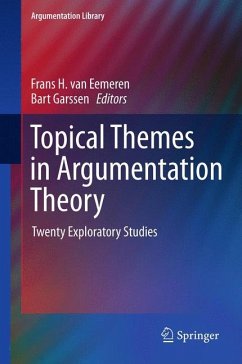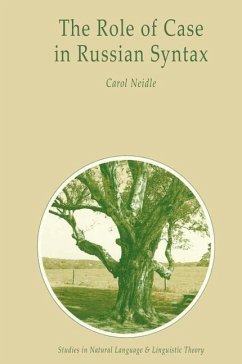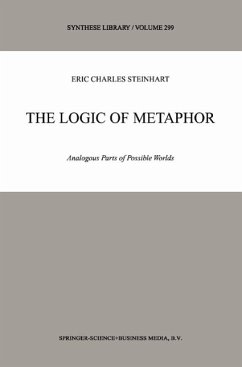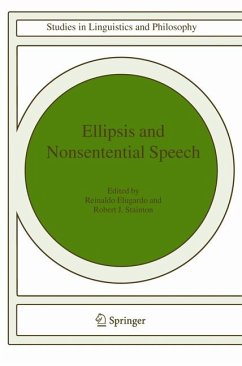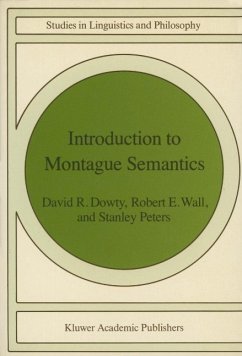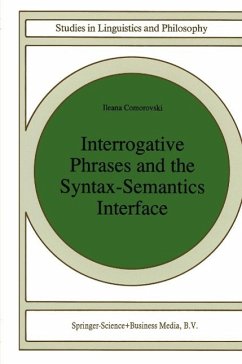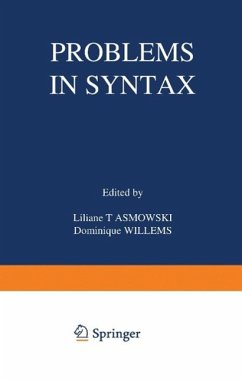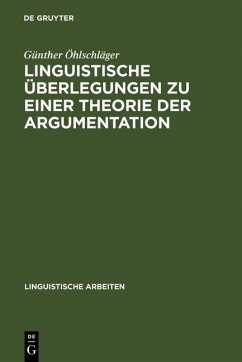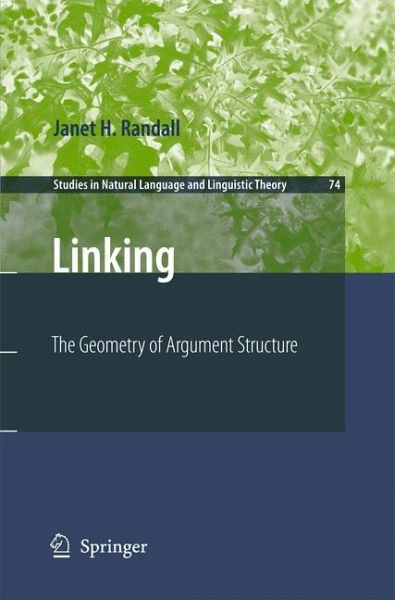
Linking (eBook, PDF)
The Geometry of Argument Structure
Versandkostenfrei!
Sofort per Download lieferbar
112,95 €
inkl. MwSt.
Weitere Ausgaben:

PAYBACK Punkte
56 °P sammeln!
Linking - how semantic arguments map to the syntax - is one of the challenges for theories of the syntax-semantics interface. In this new approach, Janet Randall explores the hypothesis that the positions of syntactic arguments are strictly determined by lexical argument geometry. Yielding novel - if sometimes surprising - conclusions, her Isomorphic Linking Hypothesis establishes the linking patterns of a wide range of verbs and, with those results, shows how to reason "backwards" from how a given verb's arguments link to what its lexical representation must be. Along the way, the investigati...
Linking - how semantic arguments map to the syntax - is one of the challenges for theories of the syntax-semantics interface. In this new approach, Janet Randall explores the hypothesis that the positions of syntactic arguments are strictly determined by lexical argument geometry. Yielding novel - if sometimes surprising - conclusions, her Isomorphic Linking Hypothesis establishes the linking patterns of a wide range of verbs and, with those results, shows how to reason "backwards" from how a given verb's arguments link to what its lexical representation must be. Along the way, the investigation takes on thorny lexical issues - reformulating the Theta Criterion, revisiting the multiple lexical-entry debate, eliminating "indirect" arguments and redefining unaccusativity. It offers new insights into how arguments are represented, assembles a host of argument/adjunct diagnostics, and re-examines the relation between arguments and predicates. The result of this incisive study is a simple and consistent account of linking, integrated with a radical rethinking of the nature of arguments and argument structure.
Dieser Download kann aus rechtlichen Gründen nur mit Rechnungsadresse in A, B, BG, CY, CZ, D, DK, EW, E, FIN, F, GR, HR, H, IRL, I, LT, L, LR, M, NL, PL, P, R, S, SLO, SK ausgeliefert werden.






